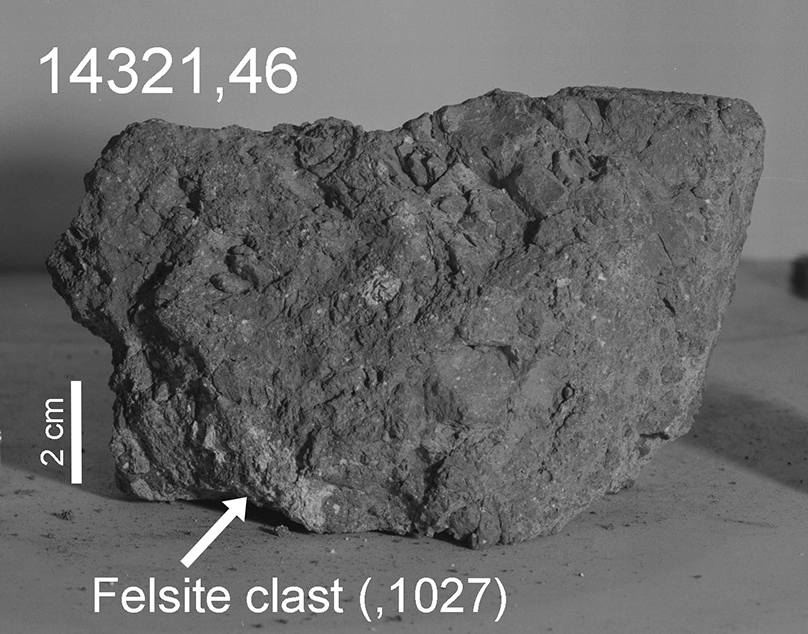In the lunar sample, delivered by NASA astronauts of the Apollo 14 mission, the oldest breed of Earth was discovered.
An international group of scientists with the support of the Center for Moon Science and Research (CLSE), found evidence that the stone sample studied was thrown from Earth by a large asteroid impact about 4 billion years ago. Subsequently, the rock was mixed with other materials on the lunar surface.
Initially, the team developed a method for detecting foreign fragments in lunar regolith, which prompted the main researcher of CLSE, Dr. David A. Kringa, to find the piece of the Earth on the Moon. Under the leadership of research scientist Jeremy Bellucci and Professor Alexander Nemchin, the team members at the Swedish Museum of Natural History and the Curtin University in Australia accepted this challenge.
The result of their research was a two-gram fragment of rock consisting of quartz, feldspar and zircon, which are commonly found on Earth and absolutely alien to the Moon. Chemical analysis of a fragment of rock showed that it crystallized in an oxidized system, similar to that of the earth and at terrestrial temperatures.
This is an extraordinary find that helps to depict a more accurate picture of the early Earth and the bombardments that changed our planet at the dawn of its life.
-David A. Kring
It is possible that the sample does not have terrestrial origin, but instead crystallized on the moon, but this would require conditions not previously identified by lunar samples. It would take a rock to form at great depths in the lunar mantle. Therefore, the most likely interpretation is that the sample arrived on the moon from Earth.
The analysis also provided additional information on the history of the find. The stone crystallized about 20 kilometers under the surface of our planet 4-4.1 billion years ago. Then it was excavated by one or several large collisions and launched in the direction of the Moon. The group’s previous work showed that at that time, impact asteroids produced craters on Earth with a diameter of thousands of kilometers, large enough to lift material from such depths to the surface. Once the sample reached the surface of the satellite, it was affected by several other shock events, one of which partially melted it 3.9 billion years ago and probably buried it beneath the surface.
Thus, the find is an eyewitness to the period of intense bombardments, characteristic of the solar system in the first billion years of its existence. After that, the moon was affected by lighter and less frequent collisions. The last impact on the test sample occurred about 26 million years ago, an asteroid hitting the Earth’s satellite created a small crater with a diameter of 340 meters and lifted the sample back to the lunar surface, where astronauts collected it 48 years ago (from January 31 to February 6, 1971) .
Dr. David A. Kring suspects that the conclusion about the terrestrial origin of a fragment of the rock will be controversial, since the first finding of this kind can be hardly perceived by the geological community, and hopes that with additional research other samples will be found.
NASA astronauts, of the Apollo 14 mission, brought the oldest Earth stones from the moon
Click To Tweet
The post NASA astronauts, of the Apollo 14 mission, brought the oldest Earth stones from the moon appeared first on Upcosmos.com.
